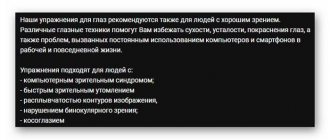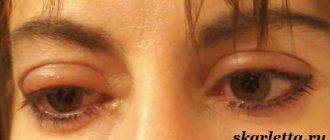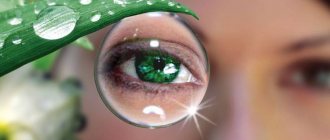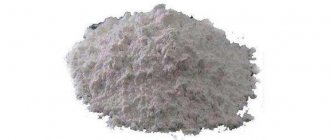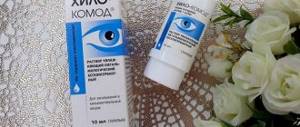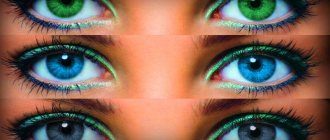In what cases is this necessary?
Eye washing is a hygienic procedure with a therapeutic effect. To achieve a positive result, it is recommended to rinse the conjunctival cavity as prescribed by a doctor.
Experts have determined in which cases the procedure is necessary:
- The presence of a foreign body in the eye: particles of dust, debris, sand, small insects, cosmetics or detergents.
- Impact of penetrating and non-penetrating mechanical factors.
- Development of inflammation of any etiology.
- Dry mucous membrane.
- Chemical and thermal burns.
- Damage to the cornea by infrared radiation or ultraviolet radiation.
- Feeling of pain.
- Acidification of the organs of vision in newborns.
The condition in these cases can only be alleviated by washing. Any other manipulations can lead to injury to the eyeball. Abuse of this procedure risks the development of side effects. Therefore, rinsing at the initial stage can alleviate the condition, and after consultation with the doctor, it can also serve therapeutic purposes.
Herpetic conjunctivitis
The herpes simplex virus is also often the cause of eye inflammation. It can provoke various types of herpetic conjunctivitis: catarrhal, follicular, vesicular-ulcerative.
After activation of the herpes virus, the following symptoms are observed:
- swelling and hyperemia of the inner membrane of the eyelid;
- pain in the eyes, lacrimation;
- clear or mucous discharge.
To eliminate the symptoms of viral conjunctivitis, medications containing interferon are used. They fight viruses, alleviate the symptoms of the disease and improve their general condition. These are drops and ointments such as “Aktipol”, “Oftan Idu”, “Oftalmoferon”, “Oftan”, “Sodium Sulfacyl”, “Vitabakt”, “Levomycetin”, “Tobrex”, “Floxal”, etc.
For the herpetic form of the disease, Florenal, Zovirax, Virolex, etc. drops are used. If the virus has also affected the skin around the eyes, then Acyclovir and Valtrex ointments can be additionally prescribed. To avoid the addition of a bacterial infection, tetracycline or erythromycin ointments and antibiotic eye drops are additionally used.
For all types of conjunctivitis, it is recommended to wash the eyes to remove mucous or purulent discharge, as well as lotions to relieve swelling. Washing the eyes with tea is a popular procedure; it is believed that the substances contained in it have a good decongestant and antiseptic effect. Let's consider how appropriate it is to use tea leaves for various types of conjunctivitis.
How can you wash a person's eyes?
The washing procedure at home is carried out in various ways using pharmaceuticals and ordinary purified water.
- By water
Used as first aid, in the absence of pharmaceuticals. Water does not have a disinfecting effect, but it effectively reduces the activity of aggressive agents on the mucous membrane of the eyes. Rinsing with water is carried out abundantly until the foreign body is removed from the conjunctival cavity or until the ambulance arrives.
- Chlorhexidine
Belongs to the group of antiseptic agents. The prepared solution is purchased at the pharmacy with a concentration of 0.02 or 0.05%. Wash with a cotton pad soaked in the medicine in the direction from the outer corner of the eye to the bridge of the nose. The eyelids are lowered.
- Furacilin
It is considered the safest antibacterial agent. To prepare the solution and perform the manipulations you need:
- Dissolve 2 tablets in 250 ml of warm water.
- Strain the resulting solution.
- Soak sterile gauze pads in the prepared medicine and wipe your eyes.
- Borom
Characterized by a high antiseptic effect. Boric acid is used in diluted form.
To prepare the solution, 5 g of powder is dissolved in 250 ml of warm water. The finished product is also used for eye drops.
- Penicillin
A solution based on penicillin has a high antiseptic effect. Rinsing is prescribed for infectious eye diseases.
In pharmacies you can buy the product in powder form and prepare the solution yourself, or purchase the ready-made Miramistin drug.
- Peroxide
Active against many pathogenic microorganisms. Peroxide is used exclusively in diluted form. Most often, hydrogen peroxide is used in the preparation of phytosolutions for washing the organs of vision.
Prescription of medications for washing the conjunctival cavity is carried out only by a doctor. Taking into account the clinical picture, the specialist will tell you how to wash the eye at home, determine the treatment regimen and the duration of the therapeutic course. Self-medication can lead to the development of negative consequences.
Allergic conjunctivitis
Allergic inflammation of the eyes occurs as a reaction of the body when the mucous membrane is exposed to various substances.
In modern ophthalmology, many types of allergens are known. Here are the symptoms observed when allergies develop in adults and children:
- hyperemia (redness) of the conjunctiva, swelling of the eyelids;
- profuse lacrimation;
- itching and irritation;
- clear or mucous discharge;
- runny nose and cough.
With allergic conjunctivitis, the eyes itch all the time, which causes discomfort in everyday activities. It is impossible to wear contact lenses at this time, women are not allowed to paint their eyes, and it is difficult to maintain a normal rhythm of life. Just imagine that your nose is stuffy all the time, and tears flow from your reddened eyes, you are constantly sneezing and coughing.
The severity of allergic conjunctivitis depends on the amount of allergen that enters the mucous membrane of the eyes and the degree of vulnerability of the body. The rate of development of the reaction also varies, and it can appear immediately or after 1-2 days. According to the nature of the course, allergic conjunctivitis in children and adults is divided into acute, subacute or chronic.
Folk remedies
Alternative medicine products are very popular at home. The most effective are decoctions and infusions of medicinal herbs.
Naturopaths recommend using the following folk remedies:
- Black tea leaves. Tea leaves are the most accessible and used means. To carry out the manipulations, you need to brew light strength tea.
- Dill greens. It is used as a mono remedy and as a component of a healing decoction. The easiest way is to squeeze the juice from the fresh leaves of the plant and rinse your eyes.
- Propolis water. To prepare it, you need to grind dried propolis flowers and pour a glass of warm water. Leave for a couple of hours.
- Rose hip. Mix 35 g of crushed berries of the plant with 200 ml of boiling water and simmer over low heat for 5 minutes. Remove from heat, cover tightly and leave for half an hour.
- Medicinal chamomile. Based on it, an infusion is prepared that effectively relieves inflammation. To prepare the infusion, pour 10 g of raw material into a glass of water, close the lid and leave for 40 minutes.
- Bay leaf. Washing is carried out with infusion. To prepare it, pour 2-3 small bay leaves into 200 ml of boiling water and leave for 1 hour.
All natural remedies have a number of contraindications that must be taken into account when rinsing with medications based on them.
Eye wash solutions for children
Many parents are concerned about what they can use to wash their child’s eyes. After all, children require more attention. Like adults, an infection or even a simple speck can get into their eyes. As a result, this will cause inflammation, including conjunctivitis. In order to get rid of this pathology, you can use various solutions. The main ones are:
- Chamomile;
- Boric;
- Saline.
We have already described the scheme for preparing these solutions in the basic recipes. But let's look at some recommendations for the use of these products specifically in children.
Chamomile solution
- You need to use sterile cotton pads, slightly moistening them in the broth.
- Washing movements are always made from the outer edge to the inner edge of the eye. This helps in completely removing the infection.
- You should also always use only one cotton swab per wipe.
Boric acid solution
This solution is best used when suppuration is detected in a child.
The preparation process involves dissolving one teaspoon of the drug in boiled water.
Important! Children should only wash their eyes with 2% boric acid.
The baby's eye is wiped with only one cotton pad and only once. After that, it is immediately thrown out. When rubbing, the hands move from the outer part of the eye to the inner corner.
How to properly carry out the procedure at home
The effectiveness of eye treatment depends not only on the correct selection of the product, but also on compliance with the rules of the procedure.
Technique for irrigation of the conjunctival cavity:
- Preparatory stage: wash your hands thoroughly and prepare the medicine and necessary means for carrying out the manipulations.
- Basic: tilt your head back and open your eyes, carefully pour the medicine onto the cornea. If using a cotton pad, wipe your eyes from the outer corner to the inner.
- The final stage: after rinsing, you need to blink thoroughly and wipe the edge of the eyelid with the solution.
Only fresh solutions are used for washing. Before carrying out manipulations, it is recommended to consult a doctor.
Washing methods
In ophthalmological practice, the main methods of washing the visual organs at home are distinguished:
- With a syringe. Requires special care, as it is necessary to monitor the pressure of the medicine, which is poured into the open conjunctival cavity.
- Using a glass. Select a container with the diameter of the eye circumference and fill it with solution. The glass is applied as much as possible to the edges of the eye socket and the face is raised up. Make rotational movements and blink with your eyes.
- Using a bowl. Used in the presence of a foreign body. A small container is filled with a rinsing solution and the face is lowered into it to the level of the nose. At the same time, the eyes are open, and the eyeballs move in different directions. After the procedure, pat your face dry with a clean towel.
- With a pipette. Used for bedridden patients or children. The pipette is filled with medicine and a few drops are poured into each eye. We wipe off the excess product with a disk and massage the eyeball.
- With a cotton pad. Soak in the prepared solution, wring out slightly and rinse the eyes from the outer to the inner corners.
A correctly selected method guarantees the preservation of the health of all structures of the visual organs. If a painful sensation persists after rinsing, consultation with an ophthalmologist is necessary.
Choosing an eye wash method
The choice of eye drops should be based on:
- etiology of the disease;
- symptoms of pathology;
- severity of the process;
- phases of the disease;
- patient's age;
- the presence of allergic reactions to certain medicinal substances or their individual intolerance.
Despite the fact that the doctor takes into account all factors, the etiology of the disease always remains the priority selection criterion.
- For diseases of bacterial etiology - bactericidal and bacteriostatic drugs.
- For viral infections - antiviral agents and immunomodulators.
- For fungal infections - antimycotics.
For mixed types of lesions, complex drugs are selected that act on several types of infectious agents at once. Hormonal complex agents have the greatest activity. However, due to multiple contraindications, they are prescribed less frequently than non-steroidal analogues.
There are several options for eye cleansing. However, regardless of the method chosen, remember that the temperature of the water to cleanse the organ of vision should be at least fifteen degrees.
Suitable for removing a foreign body caught in the eye. This method is often used to relieve fatigue and tension from the organ of vision. Choose a bowl that is the right size to fit your entire face. The container must be absolutely clean.
| Add the rinsing solution to the bowl. Do not pour water to the brim, otherwise you will splash it during the procedure. Take a deep breath and place your face in the bowl, the solution should cover your eyes. However, don't overdo it. If you bend over too much, the liquid will enter your nose. |
In the water, open your eyes and move them in different directions. Such manipulations allow you to collect more liquid and carry out high-quality rinsing. Raise your face above the container and blink intensely for a few seconds. Make sure that enough cleaning fluid has penetrated into the eye.
If your eyes are tired or dry, simply dip your face in the solution several times until you feel relief. At the end of the procedure, lightly blot your eyes with a paper towel.
The method is not suitable for removing a foreign body that has entered the visual apparatus. But it copes perfectly with eye fatigue. Take a small glass and pour the cleaning solution into it. It is desirable that its diameter matches the size of the eye socket. A regular shot glass will do.
Press the glass as tightly as possible to your eye. Tilt your head back so that your vision and the bottom of the stack look up. Of course, some liquid will spill. Therefore, if you are afraid of getting your things dirty and the floor dirty, carry out the procedure over the sink, after wrapping your neck with a towel.
Flushing for children
The child's visual organs require special attention and extreme caution during treatment. Eyewash in children is a simple but effective procedure. Its implementation is advisable in the presence of purulent exudate, inflammation, excessive lacrimation and other ophthalmic pathologies.
Experts identify the following pharmaceuticals for use in pediatrics:
- Furacilin.
- Sodium chloride.
- Boric acid.
Among traditional medicines, the following have a high therapeutic effect and a gentle effect on the eyes:
- Infusion of medicinal chamomile.
- Decoction of calendula inflorescences.
- Tea brewing.
Children should only wash their eyes with fresh, warm solutions. There should be separate wipes for each eye. Hands and materials used should be thoroughly cleaned before the procedure.
The choice of solution for a child should be carried out as prescribed by a doctor.
Solutions based on plants and herbs
The debate about what is better to cleanse the organ of vision: with medications or folk remedies has not subsided for many years. Some people prefer to follow the doctor’s recommendations, others trust their grandmother’s recipes, and still others generally act at their own discretion.
Therefore, before using this or that drug, you need to become familiar with their characteristics and rules for preparing solutions.
Today, there are many recipes for cleansing the eyes, created on the basis of medicinal herbs. These remedies not only eliminate inflammation, but also relieve pus from the eye.
Chamomile decoction
The plant has a lot of useful qualities and effectively fights inflammatory processes. Can be used in the treatment of almost all ophthalmic diseases. To prepare the solution you will need:
- A teaspoon of crushed dried flowers and boiling water (250 milliliters);
- Combine ingredients and place in a container with a lid. Let sit until the solution reaches room temperature;
- Before use, filter the liquid so that microparticles from chamomile do not enter the organ of vision.
| Soak cotton swabs in the broth and clean your eyes. Chamomile solution is also used for compresses. Disks soaked in a medicinal infusion are applied to the affected eye for several minutes. |
Tea brewing
Rinsing the eyes with tea is one of the most popular procedures for eliminating inflammation and tension in the eyes. Brew a medium strength drink and cool to room temperature.
Soak cotton swabs in tea and wipe your eyes from the outer corner to the inner. For each eye use a separate cotton wool. The procedure is carried out several times during the day. For rinsing to be effective, make sure that the tea gets on the area with inflammation.
For the procedure, use only pure black or green drink without additives. Cleansing with tea leaves is recommended for people who spend a lot of time at the computer.
Plant juices
Kalanchoe juice works well for allergic conjunctivitis. They lubricate the eyelids until the unpleasant symptoms disappear completely. To strengthen the body’s protective barrier, you can drink the “nectar” of medicinal plants. This will speed up the process of eliminating inflammation.
For instillation, use the following recipe:
- Take parsley juice;
- Add celery and lettuce;
- Add four parts of carrots (one part at a time is enough for the rest of the ingredients).
You need to take the composition three times a day, one hundred grams. If you don’t find the necessary ingredients, take parsley and carrots in a ratio of 1:3. Grind them well, combine, squeeze out the juice. Drink one hundred and fifty grams of it every time before meals.
Cucumber juice will help cope with inflammation. Combine it with baking soda and dilute with a small amount of water. Soak cotton pads in the liquid and apply to your eyelids.
What else is used to cleanse the organ of vision? A solution of potassium permanganate or, more simply, potassium permanganate is widely used. The liquid should be a soft pink shade. Before use, make sure that there are no undissolved crystals left in the water. They can damage the sensitive structures of the eye.
An infusion of chamomile is also used to cleanse the organ of vision. Pour boiling water (sixty milliliters) over two teaspoons of dried flowers and leave for five minutes under a closed lid. Strain the resulting broth.
Every parent is concerned with the question: how to wash their child’s eyes? After all, their organ of vision is highly sensitive to external stimuli. And even the smallest speck that gets into their eye will cause them great discomfort. They constantly rub their eyes, which can cause infection and inflammation.
To cleanse the eyes of children, it is recommended to use chamomile, boric or salt composition. Important point! Children are allowed to wash the affected organ of vision only with a 2% solution of boric acid. Cleansing using this drug should be used if the baby has pus.
When using a saline solution, make sure that it does not burn or sting your eyes. You can also use tea, aloe juice or potassium permanganate to cleanse your child’s vision.
From the video you will learn how and with what to wash the eyes of children with conjunctivitis.
Users often ask the question: is it possible to cope with conjunctivitis by rinsing your eyes with tea? Of course, this is impossible, any doctor will say. Effective treatment consists of eliminating the very source of eye inflammation: viruses, bacteria, allergens. Tea brewing will not be able to cope with this. It is only an additional way to eliminate discharge and slightly relieve itching and irritation of the visual organs.
But it is clear to say that tea or decoctions of other plants - chamomile, celandine, etc. - absolutely useless, also wrong. Thus, black or green tea have soothing and mild antiseptic properties. This drink is absolutely harmless, does not cause allergies, and absolutely everyone can use it for rinsing, even small children.
It is only important to remember that tea leaves are an auxiliary remedy, and not a method of primary treatment. It should not become an alternative to drug therapy. Conjunctivitis of any etiology requires contacting a specialist. Only he will be able to determine the cause of the disease and prescribe proper treatment.
The question often arises: what is better to use for rinsing and lotions - black or green tea? They are actually the same plant, only black tea is dried and fermented fresh green tea leaves. However, the leaves are believed to contain more antioxidants, vitamins and minerals.
For conjunctivitis of various etiologies, the eyes need to be washed several times a day to remove traces of discharge. It is important to remember that this is not a curative measure and will not cope with the symptoms of the disease, as some people think. Rinsing the eyes with tea is just an additional measure to ensure their cleanliness and, in some cases, reduce itching and swelling.
So, with bacterial conjunctivitis, you can use tea leaves to wash your eyes with tea to remove purulent discharge. After this, you should introduce drops or apply an ointment that suppress the activity of bacteria and treat inflammation. In case of a bacterial infection, doctors recommend taking sick leave so as not to be a source of infection for others and not to expose your eyes to dust and dirt.
For allergic conjunctivitis, green or black tea will help cleanse the eyes, as well as cope with swelling and redness under the lower eyelid. People who are experiencing allergic conjunctivitis for the first time try to cope with the itching by washing their eyes with tea or compresses with tea leaves. However, these measures provide little temporary relief. Only medications can completely destroy the causative agents of the disease.
How and with what to rinse the eye in extreme conditions
If the eyes are damaged by chemicals, flushing is a mandatory first aid measure.
First of all, it is necessary to thoroughly wash the conjunctival cavity with tap water. It does not neutralize, but effectively dilutes the concentration of chemicals. This allows you to minimize the impact of aggressive substances on the tissue of the eyeball.
If the organs of vision are affected by alkali, its crystals are first removed. Then, until qualified medical personnel arrive, flushing with running water continues.
Not only the health of the organ and the quality of visual acuity and human life depend on the correctness of actions in an emergency situation and the efficiency of the procedure.
Preventing foreign objects from entering the eye
Most often, debris getting into the eye occurs due to non-compliance with safety precautions when carrying out carpentry, plumbing and agricultural work. Workers in these areas must wear special safety glasses.
In everyday life, preventive measures will help maintain eye health:
- in strong winds, especially in dry weather, cover your eyes with sunglasses;
- regular checks with an ophthalmologist for the presence of inflammatory and infectious diseases of the visual organs;
- in the summer , try to avoid swarms of midges and mosquitoes;
- follow the rules of wearing contact lenses;
- care for your eyes only after thoroughly washing your hands;
To prevent dirt from getting into children's eyes, it is recommended to wash soft toys more often. They quickly accumulate a lot of dust.
What to do if you get a speck
Most people make a mistake when removing debris from their eyes, which leads to injury to its mucous membrane.
First of all, it is necessary to examine the eye and try to determine the type of foreign body and its location. Afterwards, with clean hands, using boiled water, herbal infusions, tea or pharmaceutical preparations, you need to rinse the damaged eye.
To carry out the procedure you need:
- Pull back the lower eyelid and instill medicine into the conjunctival cavity.
- Gently wipe the excess drug with a cotton pad from the outer corner of the eye to the inner one.
- Make circular movements with your eyeball and blink thoroughly.
You can also carry out the procedure using a bowl or glass with saline solution. This method at home will help to quickly remove a foreign body from the eye, without injuring the mucous membrane.
If a speck penetrates the sclera, washing the house on your own is strictly prohibited.
Causes of allergies
Eye inflammation can occur for various reasons. Irritants are pollen of certain plants, medications, food products or their components, dust, etc. The disease is not contagious; it occurs in a specific person as an individual reaction. For example, when a birch tree blooms, millions of people feel normal, and only some of them experience allergic irritation of the mucous membranes.
To treat allergic conjunctivitis, antihistamines are used. The components included in this type of drops inhibit the effect of histamines on the body. Popular drugs for the treatment of allergic conjunctivitis include Cromohexal, Opatanol, Lecrolin, Alergoftal, Spersallerg, Alomide, Ketotifen. To eliminate irritation and itching, moisturizing drops “Vizin” and “Oftagel” are effective.
Non-steroidal drugs, in addition to relieving the symptoms of conjunctivitis, also have an analgesic effect. These include drops "Diclofenac", "Acular", "Indocollir".
Corticosteroid drugs are prescribed in cases where conventional anti-inflammatory and antihistamine drugs do not have the desired effect. They are highly effective in treatment, but they also have side effects: for example, increased intraocular pressure. Corticosteroids include Dexamethasone, Loteprednol, Prenacid, Maxidex.

